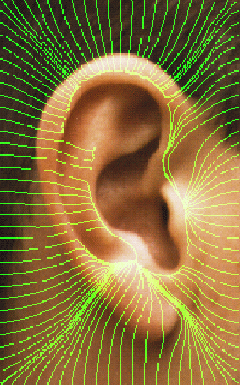Editor’s Note: Though occasional references are made in passing to old posts, I have previously not resurrected old material. Today’s post unearths an embryonic story written more than 18 months ago, long before it surfaced as a professional reality. That story has now hatched and is featured in the newest edition of Starkey’s in-house journal.{{1}}[[1]]Frigerio, F. (2012), The future of ear scanning. INnovations 2(2), pp 37-40.[[1]] I admit to a certain (small) thrill in covering a story first, but I get an even bigger thrill out of seeing theory turned into professional innovation to power the hearing aid industry. Of course, I was not really first. David Kirkwood wrote about the future of ear scanning way back in 2003! Here is the excerpted version of my coverage in 2010, slightly updated to accommodate industry developments.
A proof-of-concept center is a way of commercializing scientific discoveries by bringing scientists together with business funding and know-how, turning former ivory tower occupants into marketplace entrepreneurs. Lantos Technologies started that way–in an MIT entrepreneurial center–with seed funding of $1.6 million from Catalyst Health Ventures, Excel Venture Management, and Mass Medical Angels. Lantos founder Douglas P Hart, an MIT professor of mechanical engineering, developed a 3-D scanner for ear canals that would enable precision fitting of custom hearing aids and earmolds. His 3-D vision saw past the science to the commercial viability: “We’re hoping people will be able to walk in the store and have their ears scanned like people get their ears pierced today. … That’ll lower the cost because they don’t have to go to a specialty doctor.”
Earmold scanning is not new in the hearing aid industry, but it is only a step toward the larger technological goals of computerized ear canal measurements and shell fabrication. In a research forum, the consortium group T2RERC (Research Engineering Research Center on Technology) identified computerized ear canal measurements, automated earmold products, earmold materials, and designs as high-priority needs and good business opportunities for our profession and industry. Several of their designs suggestions were fascinating: 1) “pneumatic earmolds” that pump up to fit the canal and deflate for insertion and removal; 2) “chameleon” earmolds made from material that changes color according to users’ skin colors (could also be handy for sun burns).
In a 9/16/10 press release, Lantos’ CEO commented that the company “is primed to revolutionize the way people experience hearing aids and custom devices for ears.” Investors’ quotes envisioned new technical applications:
- Include all types of extended wear hearing devices … such as custom fit hearing aids, earphones and noise-canceling devices.
- promise to provide huge benefits to millions of people suffering from hearing loss, and also open up new market opportunities in customized user interface for many everyday devices.
- address multiple markets within the audiology field, including hearing aids, custom earphones, military, hearing protection and related diagnostic applications. …
Back in 2010, Lantos aim was to change “the way people experience custom ear devices and the new data captured will drive product innovation in the industry [and create a] substantial leap forward for the multibillion-dollar global market for hearing aids.” At that time, Lantos was already meeting with Siemens and discussing the technology on facebook. In June 2011, Lantos’ 3D ear canal scanner won a Frost & Sullivan Award for Excellence in Best Practices. In 2012, Lantos has teamed up with Starkey and perhaps other manufacturers as well. The original blog ended on a speculative note that anticipated today’s market turmoil:
What might happen once shells of hearing devices, even deep fitting instruments, become off-the-shelf items in drug stores? Where and how will the processing chips and programming meet up with the shells and the audiometric test results? Will there be a need for office fittings? Will everything go wireless? Will people “fit” their own via cell phone programming applications? Will the FDA still be in the picture, and if so, how? Where will physicians be in the process? What role will hearing health care providers serve and in what manner will they serve it?
Finally, the economic realities of technological innovation creating markets and bringing in competitors continues to hold. 3DM is a Canadian laser scanning company, with patents dating back at least as far as 2004, which has entered the ear canal competition with a hand-held scanner. 3DM was an exhibitor at this year’s AudiologyNow meeting in Boston, where it garnered the New Product Showcase Award from AAA.
photo courtesy of gearfuse







3DM is based out of Atlanta, GA, not Canada.
I have not overlooked this comment. I agree it is in Atlanta GA, but the laser patent of which I was speaking was filed by a 3DM company that lists its address as Canada. We’re trying to figure this out: could there really be two companies with the same name doing the same technology in two different countries at the same time?